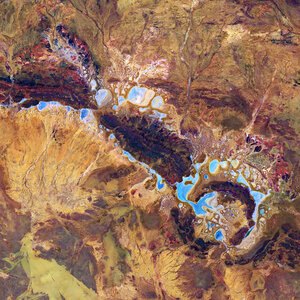Accept all cookies Accept only essential cookies See our Cookie Notice

About ESA
The European Space Agency (ESA) is Europe’s gateway to space. Its mission is to shape the development of Europe’s space capability and ensure that investment in space continues to deliver benefits to the citizens of Europe and the world.
Highlights
ESA - United space in Europe
This is ESA ESA facts Member States & Cooperating States Funding Director General Top management For Member State Delegations European vision European Space Policy ESA & EU Responsibility & Sustainability Annual Report Calendar of meetings Corporate newsEstablishments & sites
ESA Headquarters ESA ESTEC ESA ESOC ESA ESRIN ESA EAC ESA ESAC Europe's Spaceport ESA ESEC ESA ECSAT Brussels Office Washington OfficeWorking with ESA
Business with ESA ESA Commercialisation Gateway Law at ESA Careers Cyber resilience at ESA IT at ESA Newsroom Partnerships Merchandising Licence Education Open Space Innovation Platform Integrity and Reporting Administrative Tribunal Health and SafetyMore about ESA
History ESA Historical Archives Exhibitions Publications Art & Culture ESA Merchandise Kids Diversity ESA Brand Centre ESA ChampionsLatest
Space in Member States
Find out more about space activities in our 23 Member States, and understand how ESA works together with their national agencies, institutions and organisations.
Science & Exploration
Exploring our Solar System and unlocking the secrets of the Universe
Go to topicAstronauts
Missions
Juice Euclid Webb Solar Orbiter BepiColombo Gaia ExoMars Cheops Exoplanet missions More missionsActivities
International Space Station Orion service module Gateway Concordia Caves & Pangaea BenefitsLatest
Space Safety
Protecting life and infrastructure on Earth and in orbit
Go to topicAsteroids
Asteroids and Planetary Defence Asteroid danger explained Flyeye telescope: asteroid detection Hera mission: asteroid deflection Near-Earth Object Coordination CentreSpace junk
About space debris Space debris by the numbers Space Environment Report In space refuelling, refurbishing and removingSafety from space
Clean Space ecodesign Zero Debris Technologies Space for Earth Supporting Sustainable DevelopmentLatest
Applications
Using space to benefit citizens and meet future challenges on Earth
Go to topicObserving the Earth
Observing the Earth Future EO Copernicus Meteorology Space for our climate Satellite missionsCommercialisation
ESA Commercialisation Gateway Open Space Innovation Platform Business Incubation ESA Space SolutionsLatest
Enabling & Support
Making space accessible and developing the technologies for the future
Go to topicBuilding missions
Space Engineering and Technology Test centre Laboratories Concurrent Design Facility Preparing for the future Shaping the Future Discovery and Preparation Advanced Concepts TeamSpace transportation
Space Transportation Ariane Vega Space Rider Future space transportation Boost! Europe's Spaceport Launches from Europe's Spaceport from 2012Latest
Tenoumer Crater, Mauritania
Thank you for liking
You have already liked this page, you can only like it once!
Deep within the Sahara Desert lies one of the best-preserved craters on Earth. On Asteroid Day, the Copernicus Sentinel-2 mission takes us over the almost-perfectly circular Tenoumer Crater in Mauritania.
Tenoumer Crater, visible in the centre of the image, is 1.9 km wide. The rims of the crater rise some 110 m high above the base, but the bottom of the crater is covered with approximately 200 to 300 m thick layer of sediments.
It was long debated whether the crater was formed by a volcano or meteorite. Scattered rocks around the crater, similar to basalt, created the impression of an ancient volcano. Yet a closer exanimation of the structure revealed the crater’s hardened ‘lava’ was actually rock that had melted by a meteorite impact.
The crater sits in a vast plain of rocks that are so ancient they were deposited hundreds of millions of years before the first dinosaurs walked Earth. Even though it resides in ancient rock, Tenoumer is much younger, ranging in age between 10 000 and 30 000 years old.
This Sentinel-2 false-colour image, captured on 16 May 2022, shows the arid landscape surrounding the crater which appears in varying shades of brown, tan and orange. Zoom in to explore this image in its full 10 m resolution.
Asteroid Day is the United Nations-sanctioned day of public awareness of the risks of asteroid impacts, held annually on 30 June. More than one million asteroids have been discovered in the Solar System, with many more expected to be out there. ESA’s Planetary Defence Office, ESA’s Near-Earth Object Coordination Centre and astronomers around the globe are looking up to keep us safe, working together to ensure we know well in advance if an asteroid is discovered on a collision course.
Tune into ESA WebTV today from 10:30 CEST where asteroid experts from ESA, from across Europe and worldwide will converge in Luxembourg to take part in a packed four-hour live programme of panels and one-on-one interviews. More information can be found here.
-
CREDIT
contains modified Copernicus Sentinel data (2022), processed by ESA -
LICENCE
CC BY-SA 3.0 IGO or ESA Standard Licence
(content can be used under either licence)

Earth from Space: Meteor Crater

Shoemaker Crater, Australia

Earth from Space: Australian crater

Roter Kamm impact crater















 Germany
Germany
 Austria
Austria
 Belgium
Belgium
 Denmark
Denmark
 Spain
Spain
 Estonia
Estonia
 Finland
Finland
 France
France
 Greece
Greece
 Hungary
Hungary
 Ireland
Ireland
 Italy
Italy
 Luxembourg
Luxembourg
 Norway
Norway
 The Netherlands
The Netherlands
 Poland
Poland
 Portugal
Portugal
 Czechia
Czechia
 Romania
Romania
 United Kingdom
United Kingdom
 Slovenia
Slovenia
 Sweden
Sweden
 Switzerland
Switzerland

























